Week 1: What is an ecosystem?
Use 'Print preview' to check the number of pages and printer settings.
Print functionality varies between browsers.
Printable page generated Thursday, 25 April 2024, 12:00 PM
Week 1: What is an ecosystem?
Introduction
Throughout this course you will be considering these overarching questions:
- What is the importance of understanding ecosystems?
- How do they work?
- How crucial is their conservation?
But first, what constitutes an ecosystem and how is an ecosystem defined? Consider the habitats shown in Figure 1. Are they individual ecosystems or groups of ecosystems? Could there be different ways of defining ecosystems?
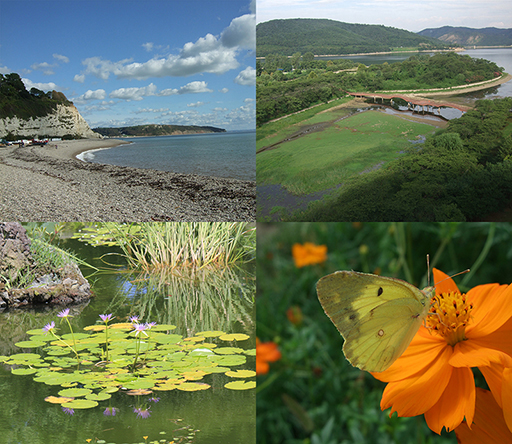
There are four photos of possible ecosystems or groups of ecosystems to illustrate the problenmss of defining an ecosystem. The images are: the Jurassic coast in the UK, a river system in South Korea, plants floating on a pond and a butterfly feeding from a single flower.
By the end of this first week you will be able to explain how an ecosystem is defined, in terms of energy flow, and be able to define and use terms which are introduced in the videos and text and apply them to new situations and examples where appropriate.
There is more than one way in which an ecosystem can be defined. In the following video Dr Mike Gillman highlights the difference between two schools of thought. One definition is that an ecosystem is an area where groups of organisms experience similar conditions.
Alternatively, an ecosystem is a living system of energy transfer, a whole complex of organisms living together, linked by energy transfer. The key difference is that ‘area’ defines one, whereas ‘energy relationships’ define the other.
Before we can begin to tackle the larger issues of ecosystems and how they have been compromised by human intervention, we must understand what is meant by ‘ecosystem’. As you watch the video ‘What is an ecosystem?’, consider the following questions, which we will discuss in the next section:
- What is the key difference between the definitions?
- What is the working definition of ‘ecosystem’ that we are going to use in this course?
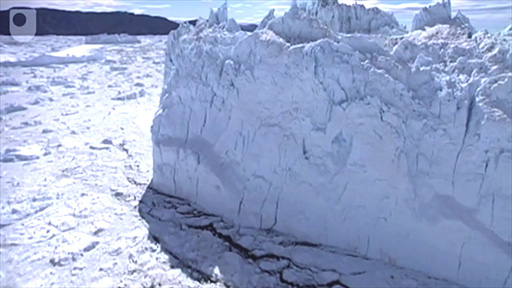
Transcript
What is an ecosystem?
1 Define an ecosystem
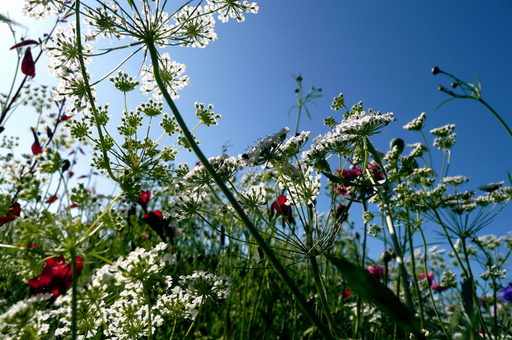
Close up image of a variety of plants in the same habitat.
You should now be able to provide definitions of the key terms you have encountered in the previous video. Begin to construct your personal glossary of them, which you can keep by you as you study.
Building your own glossary is an effective way of consolidating your learning. We have provided a Glossary template which you can use to build your own if you choose. There are already a few entries in the Glossary, to give you a feel for the sort of definitions that you should be including. But whatever method you choose for collecting together terms and definitions, by the end of your study of ecosystems you should have a working document that you can add to if you study other science subjects.
To formulate a working definition of an ecosystem you may have to use some of the terms you have added to your glossary. Is the following definition a suitable one to work with?
An ecosystem is a set of organisms and abiotic components linked by processes of energy transfer and cycling of materials.
2 Investigating ecosystems
Let’s examine the concept of an ecosystem in more detail using an example that is familiar to many people: a pool on a rocky beach, in Britain (Figure 3). As you work through, consider what defines the limits of a particular ecosystem.
- How does the tide change the nature of a rock pool ecosystem?
- What role does the Sun take in sustaining the ecosystem in the rock pool?
Also think about how can this be extrapolated and applied to other ecosystems with variable physical environments.
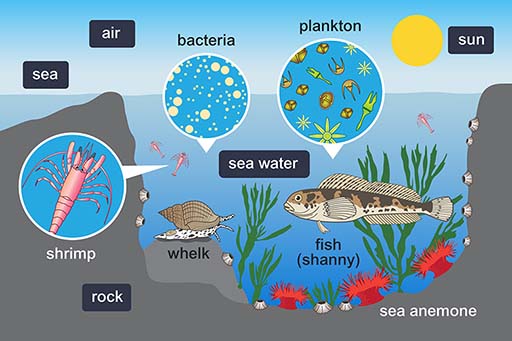
Diagram of a sea shore rock pool showing some of the organisms that you might find in one. The examples are bacteria, plankton, sea anemones, whelks, shrimps and fish.
2.1 The rockpool
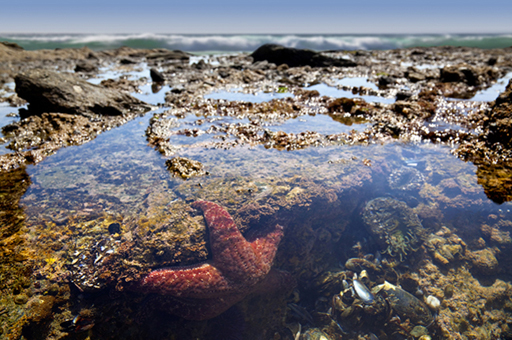
A photo of a typical rock pool on the seashore with a large starfish in the foreground.
Like all ecosystems, a rock pool is linked to the wider world and to other ecosystems. This link is most apparent in the shape of the tides every day, which change the sea water in the pool and bring in new organisms from the open ocean (as well as allowing others to escape back into the sea). The tides also change the physical characteristics of the pool and its surroundings. When the tide is out, the rock pool is a collection of organisms living together in a fairly clearly defined place. When the tide is in, the pool may become no more than a small depression on the rocky sea bed.
Now let’s look at the components of our rock pool ecosystem. Remember, any ecosystem contains living things, a physical environment and a source of energy.
The most obvious living things will tend to be the largest ones: seaweeds, sea anemones, whelks, shrimps, fish and so on. But this shouldn’t blind us to the importance of the organisms we can’t see. For example, the water itself is full of tiny plants and animals – called ‘plankton’ – that are food for many of the larger creatures. And the water and rocks contain huge numbers of the simple single-celled organisms called bacteria, and other microscopic forms of life, that play an important part in the working of the ecosystem.
The most obvious components of the physical environment of the pool are the rock that surrounds it, the sea water in it, and the air above it (when the tide is out). But these physical factors are far from fixed. The tides, and the effect of sunlight on the exposed pool, mean that the organisms that live in it must be able to withstand changes and extremes of, for example, temperature or salt content. Some small pools dry up altogether in the summer or ice over in winter when the tide is out.
Almost all of the energy that supports the life in the pool arrives in the form of light from the sun. Some of this energy is captured by seaweeds attached to the rocks and microscopic plants (types of plankton). These plants are eaten by animals, which are eaten by other animals, and so on. But the sun is not the only source of energy involved in the workings of this particular ecosystem: the tides that sweep across the pool are driven up and down the beach by the gravitational pull of the moon.
Activity 1
Using your knowledge of rock pools, pick out a few of the key features of the ecosystem, using these headings:
- rock pool ecosystem – links to other ecosystems and the wider world
- ecosystem
- living things
- physical environment
- energy.
Make some note on the key features, in the box below.
Answer
Here is a list of key features for each heading:
- rock pool ecosystem – links to other ecosystems and wider world
- ecosystem – living organisms, physical environment, energy
- living things – plants, animals, plankton, bacteria
- physical environment – rock, sea water, air, tides
- energy – sunlight (also tides caused by pull of the moon).
Did you note many of the same points? Is there anything else you’d include? Is there anything you’d leave out?
Remember that it is the observer – you or I – who defines an ecosystem, and selects which organisms or aspects of the environment to study. In much the same way, you have to decide what is important when you make notes.
However big or small our ecosystem, and whichever aspect of the system we choose to study, it is ecology that provides the framework that allows us to investigate how it works – and to wonder at the beauty and strangeness of it all.
3 Study a habitat
It is possible to observe ecosystems physically, mapping out observations to determine the network that exists in a given habitat. These observations provide a valuable baseline for understanding a given ecosystem, making it easier to determine the possible negative factors that might be influencing it.
In this video, we join a group of students who are learning how to classify habitats, in the field. After you watch the video, add a definition of an ‘indicator species’ to your glossary.

Transcript
Study a habitat
[MUSIC PLAYING]
4 The wetlands of Wicken Fen
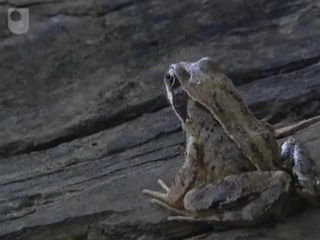
Transcript
The wetlands of Wicken Fen
[MUSIC PLAYING]
[MUSIC PLAYING]
Wicken Fen is a conservation area in the east of England, near Cambridge. It is one of Britain’s oldest nature reserves and home to around 7,000 species of mammals, birds, plants, insects and other invertebrates.
Wicken Fen has been described as ‘biodiversity hotspot’, and offers the opportunity to observe multiple habitats, each with its own ecosystem, interacting with each other and forming larger ecosystems. The wide range of habitats, the diversity of species, and the complex food webs present in Wicken Fen are all factors in determining biodiversity.
Take this opportunity to explore the area around Wicken Fen.
4.1 Following the food web in Wicken Fen
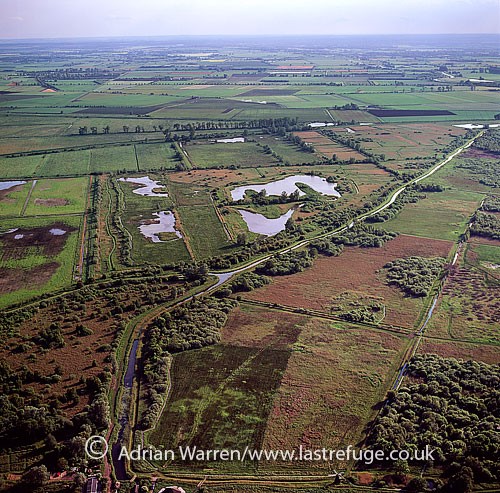
An aerial view of Wicken Fen in Cambridgeshire, UK showing the fen and wetlands with farms and cultivated land in the distance abutting the fen.
The definition of an ecosystem can be framed in terms of energy flow. You need to know what organisms are living in it – the biodiversity of the system. Next, you can work out how the organisms are linked.
The sum of the nutritional links between organisms in an ecosystem is known as the food web.
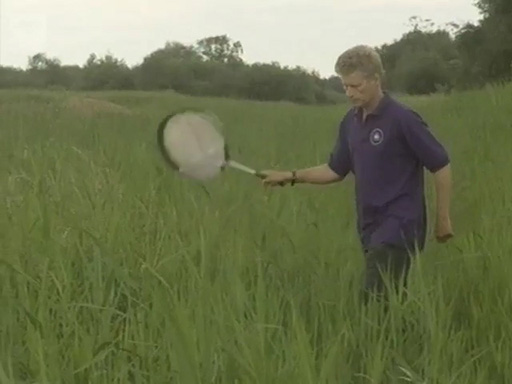
Transcript
Following the Food Web in Wicken Fen
Activity 2
There are two food webs mentioned in the film and one animal that links them together. What is the significance of this link?
Note your thoughts in the box provided.
Answer
The dragonflies link the aquatic with the terrestrial food webs. Energy obtained by the dragonfly larvae feeding below the surface is transferred to the terrestrial food chain. This example emphasises the complexity of links that need to be unravelled if a picture of energy flow is to be drawn accurately.
4.2 Managing habitats in Wicken Fen
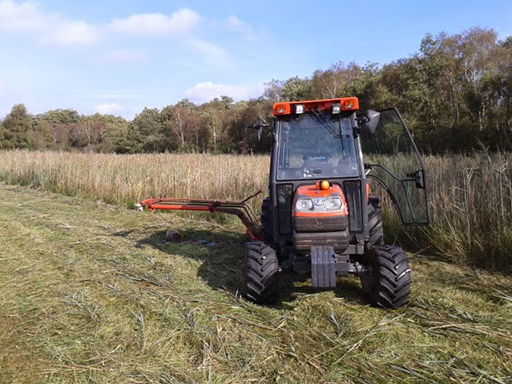
A tractor cutting the sedge on Wicken Fen. This is part of the National Trust management programme for the fen.
The diversity of life in Wicken Fen is influenced by the way in which humans use the habitats that make up the ecosystem, as Professor Gowing explains. It is possible to determine the best management programme, by setting up an experiment.
Whilst watching the video, consider the following:
- Why does Wicken Fen have to be managed?
- What were the key features of the experiment that was set up at Wicken Fen in the 1920s?
Transcript
Managing Habitats in Wicken Fen
5 Week 1 quiz
This quiz is about defining the term ecosystem and applying your knowledge to a simple ecosystem.
Complete the Week 1 quiz now.
Open the quiz in a new window or tab then come back here when you're done.
6 Summary of Week 1
In the final video of this week, Dr David Robinson, Senior Lecturer in Biological Science at The Open University, discusses what you have learned so far in this course and then introduces some of the ideas and examples explored in Week 2.
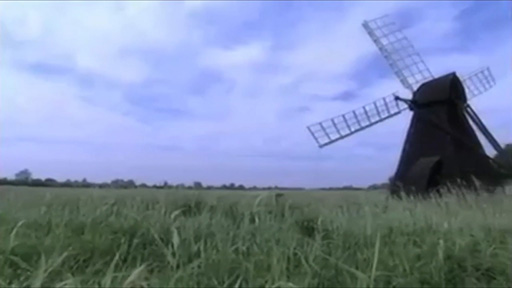
Transcript
Interactions
There are different ways that an ecosystem can be defined and you reach a working definition of an ecosystem. You examined the core concept of an ecosystem through the example of a rock pool. Guidance as to how to study ecosystems was provided through the case study of Wicken Fen.
The next part of our learning journey starts with carbon and the capture of energy from light by plants. Plants are at the base of the food chain for all the animals in an ecosystem. The familiar woodland is an ideal place to begin to understand ecosystems in more depth.
If you would like a short break or to find out more about coastal habitats and Wicken Fen visit our Ecosystems area on OpenLearn.
You can now go to Week 2.
Acknowledgements
Except for third party materials and otherwise stated in the acknowledgements section, this content is made available under a Creative Commons Attribution-NonCommercial-ShareAlike 4.0 Licence.
The material acknowledged below is Proprietary and used under licence (not subject to Creative Commons Licence). Grateful acknowledgement is made to the following sources for permission to reproduce material in this course:
Course image: courtesy of Dr. David J. Robinson, The Open University
Figure 1: courtesy of Dr. David J. Robinson, The Open University
Figure 2: Courtesy of Shawndra Hayes-Budgen
Figure 3: magnetcreative; iStockphoto.com
Figure 5: Adrian Warren; Last refuge
Figure 6: taken from: http://wickenvision.blogspot.com/2014/10/let-cutting-commence.html
Audio/Video
The Wetlands of Wicken Fen © The Open University, contains BBC clips © BBC
Summary Week 1 © The Open University, contains BBC clips © BBC
Every effort has been made to contact copyright owners. If any have been inadvertently overlooked, the publishers will be pleased to make the necessary arrangements at the first opportunity.
Don't miss out:
1. Join over 200,000 students, currently studying with The Open University – http://www.open.ac.uk/ choose/ ou/ open-content
2. Enjoyed this? Find out more about this topic or browse all our free course materials on OpenLearn – http://www.open.edu/ openlearn/
3. Outside the UK? We have students in over a hundred countries studying online qualifications – http://www.openuniversity.edu/ – including an MBA at our triple accredited Business School.
Copyright © 2019 The Open University